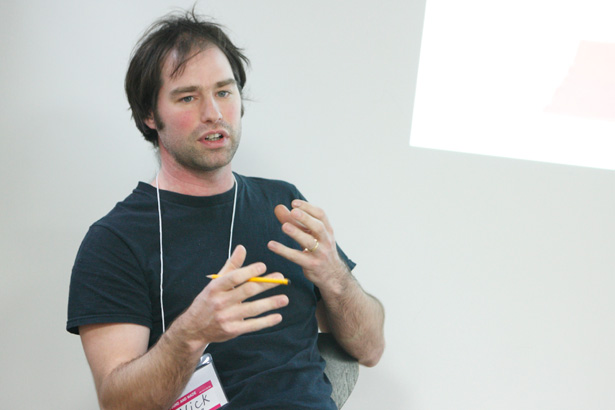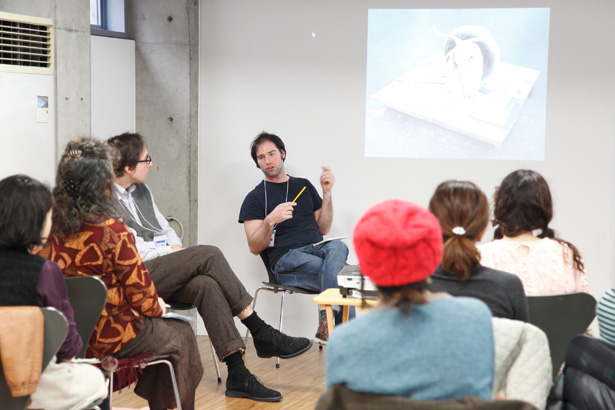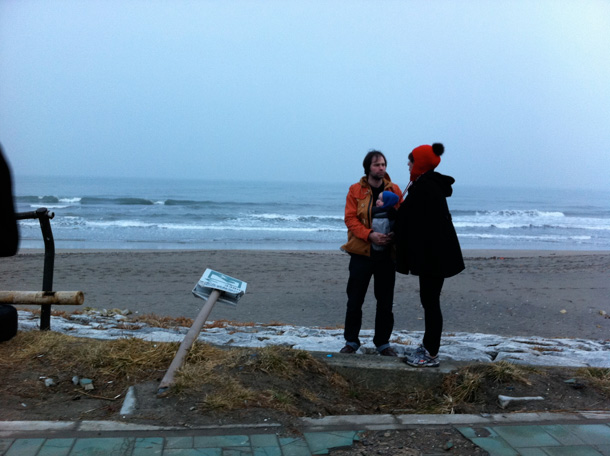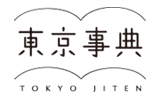Introduction.
I was invited by AIT and their partner organisation in Scotland (Cove Park) to undertake a research residency during the first three months of 2012. My intentions before coming to Tokyo were to begin the residency in an open minded way and to try to develop research areas 'on the ground' in Tokyo and elsewhere, and to discover things of interest to me that could be further developed in the future.
1) The locality (Sugamo)
I very much appreciated the fact that although not very long, six weeks is just long enough to begin to get to know a local area. I really enjoyed getting to know the Sugamo area of Tokyo a little. Having contact with an everyday part of life in this part of Tokyo, shopping for everyday goods and meeting people in local restaurants and café's whilst babysitting my one year old daughter was for me really interesting and rewarding. I am not exactly sure how it will inform my future work but the important thing for me was the way in which it provided a strong context for many of the other things that were more directly related to my practice.
2) Contemporary Art Galleries.
We were fortunate to be invited by AIT to the openings of two art fairs (G-Tokyo and Tokyo Art Fair). This gave me a really good introduction to a whole range of contemporary art galleries from Tokyo. In addition we were accompanied by AIT on a visit to a number of galleries in the Roppongi area, and I visited a number of galleries on my own.
For me the highlights were the work of Taro Izumi whose work I saw at G-Tokyo on the stand of Hiromi Yoshii. If the right opportunity were to arise in the future I would be interested in investigating his work further and developing possible future links.
I really liked the exhibition at Misako Rosen of work by Stephen Rhodes and enjoyed talking to one of the directors, Jeffrey Rosen at G-Tokyo. I have asked my Gallery (Mary Mary in Glasgow) to make contact with Jeffrey whilst they are both at Frieze Art Fair in New York with a view to discussing possibilities for exhibition opportunities with Misako Rosen in the future.
I also really enjoyed seeing the work and projects of the 3331 Gallery, an alternative arts space.
3) FOUND AND MADE Workshop
Along with co-residents Katy West and Mary Redmond we delivered a two-day practical workshop, developing sculptures with workshop participants using found and ready made materials. These sculptures were then shown on the evening of the second day in an informal exhibition.
I think that everyone involved in the workshop, both the organisers and the participants, felt that the workshop was a great success. For most of the participants this was the first time that they had been asked to produce an artwork and to talk about the ideas and intentions behind the decisions that they had made.
Probably of more importance that the artworks themselves was this exercise of discussing and presenting ideas to the rest of the group. It was really interesting for me to realise that by asking the participants to make some quite quick sculptures, but to talk seriously about these sculptures in a public forum, meant that the participants were really thinking very hard about every aspect of making and viewing a work of art. Although when developing the workshop I think that Mary, Katy and Myself felt that a practical workshop could be of value in allowing people to think about artworks in a new way I was really pleased with the depth, openness and seriousness the participants approached the task. I am sure that everyone involved will have gained an insight into some of the decisions and processes that artists use every day when making work, and that this will help them to view and perhaps understand and appreciate art in new ways.
Personally I felt that the workshop was a success and so I will be most likely to repeat it (or something similar) in the future.

photo by: Yukiko Koshima

photo by: Yukiko Koshima
4) Visit to Sendai
I was invited along with fellow residents Katy West and Sujud Dartanto by AIT to visit a number of galleries and projects in Sendai, in order to consider the impact of the 3/11 disaster on artspaces, artists and projects working in the affected area.
We visited Sendai Mediatech where I was impressed by the way the venue is well attended by the community and used for a range of different activities from community based art projects to solo exhibitions by professional artists. I very much enjoyed visiting the studio of Rieko Shiga, the artist in residence and viewing her amazing photographs and projects. I would definitely like to see more work by this artist in the future. We visited Birdo Flugas, an independent commercial gallery in Sendai that was completely flooded last year but seems to have made very good recovery and is presenting a very personal and varied programme.
AIT hired a car for us and we were able to view a small portion of the devastation to the coastal area, a very sobering and emotional experience. We also visited a beautiful shrine in the locality.

In the evening we attended the premises of Art Space Hole a project by Ayako Osanai that is working to develop meaningful and integrated projects between artist and communities affected by the disaster. This project seemed extremely good and could be interesting to follow up.
5) The Mingei movement
Of common interest to both myself and my wife Katy is the Mingei movement begun by Soetsu Yanagi and others in the 1920s and 1930s. We visited a number of sites related to the Mingei movement. Besides the Mingei museum in Tokyo we also visited the museum in the studio and house of Kawai Kanjiro in Kyoto, and the studio and garden museum of Isamu Noguchi in Mure near Takamatsu.
As there is no direct equivalent to the Mingei movement in Europe I was really interested to see how the original concepts outlined by Soetsu Yanagi had been applied in the context of live/work environments such as the homes/studios of Kawai Kanjiro and Isamu Noguchi. Especially I was very struck by the wonderful consideration given to the total integration of all the objects within a living or working environment and the different ways that this (personal) environment could be integrated with the wider (social) environment in which it forms a part, using the medium of craft. In the case of Kanjiro this was achieved via it's situation within a historic ceramic producing area of Kyoto, whilst Noguchi's studio was sited amongst the yards of the skilled stone-masons of Mure.
These visionary integrations of work with life and the wider community were an inspiration to me that I will be sure to draw upon in the future.
6) Kumanokodo
I have for some time been interested in the close relationship between the landscape and sites of religious or spiritual importance. I am interested in the way that the aesthetic of sacred sites of worship borrows from and rarefies aspects of the natural landscape in order to heighten the sensation of an individual being in a place. When I heard about the ancient pilgrimage routes of the Kumanokodo I was interested to find out more. Katy and myself decided to walk a section of one of the routes in order to see for ourselves the way that the various shrines and the landscape of the Kii peninsula work together to create a sacred landscape, and to explore the way that remnants of prehistoric nature worship co-exist with Shinto and Buddhist deities.
Walking for two days from Takijiri Oji to Kumano Hongu Taisha was a brilliant and memorable experience. It was memorable not only for the cultural and historical significance of the area, but also for allowing us a glimpse of contemporary life in remoter rural areas of Japan.
○ Future Directions
It is impossible to say at this early stage exactly how the impressions and contacts made during my stay in Japan will impact upon the future development of my work. I am beginning to work on a large-scale installation for Tramway in Glasgow and a commission for the Whitworth museum in Manchester. I am sure that many aspects of my experiences in Japan will come to have an impact on the development of these works. In particular I can imagine that the graphic design aesthetic of commercial districts of Tokyo and Osaka might influence my own graphic design that I use on wallpaper and elsewhere in my installations. The amazingly dynamic and expressive carvings from the Sanjusangen-do in Kyoto are also bound to have an impact. Also many aspects of the architecture and built environment in Japan both urban and rural may have an influence on the way this work develops.
Back to Agency of Cultural Affairs









